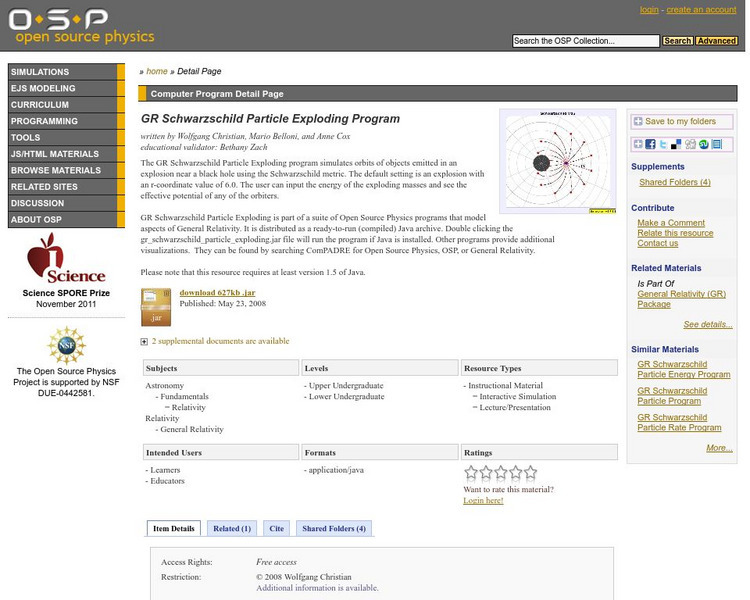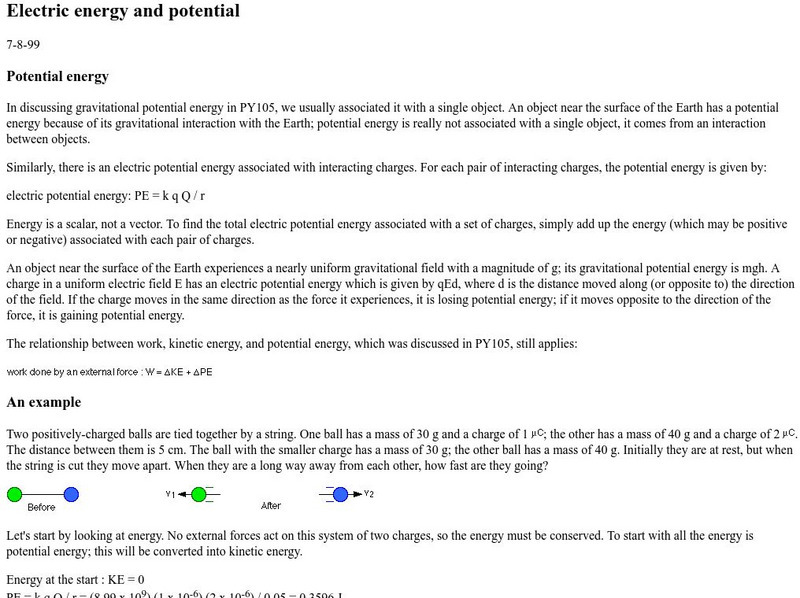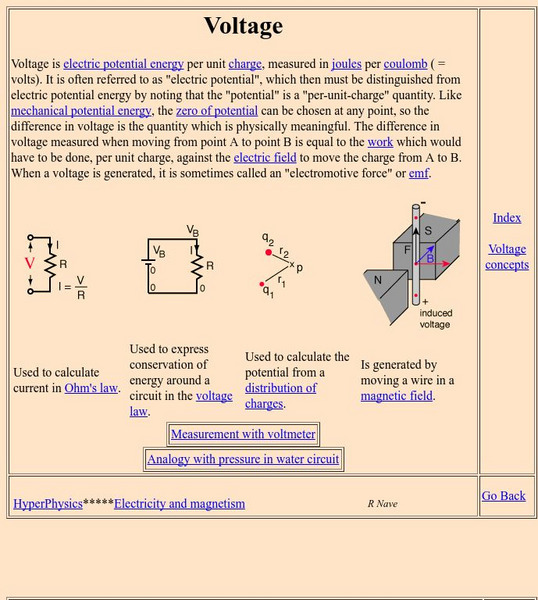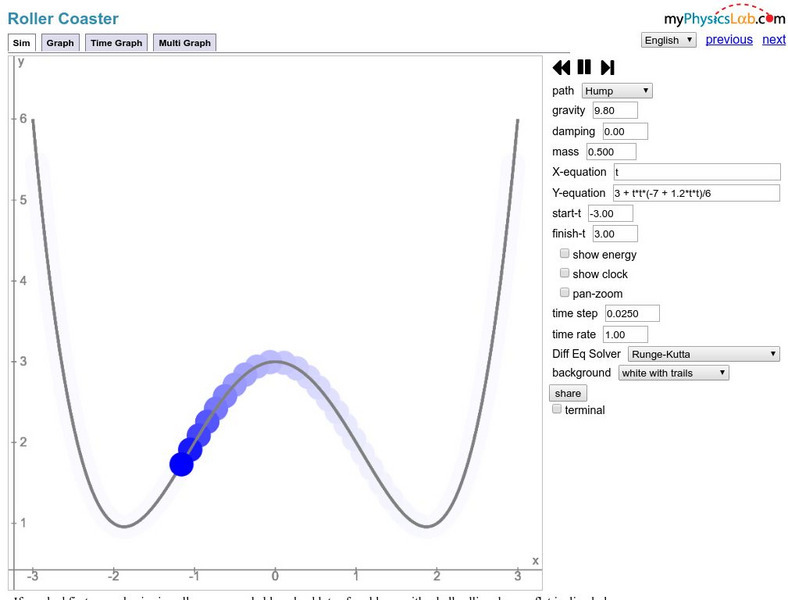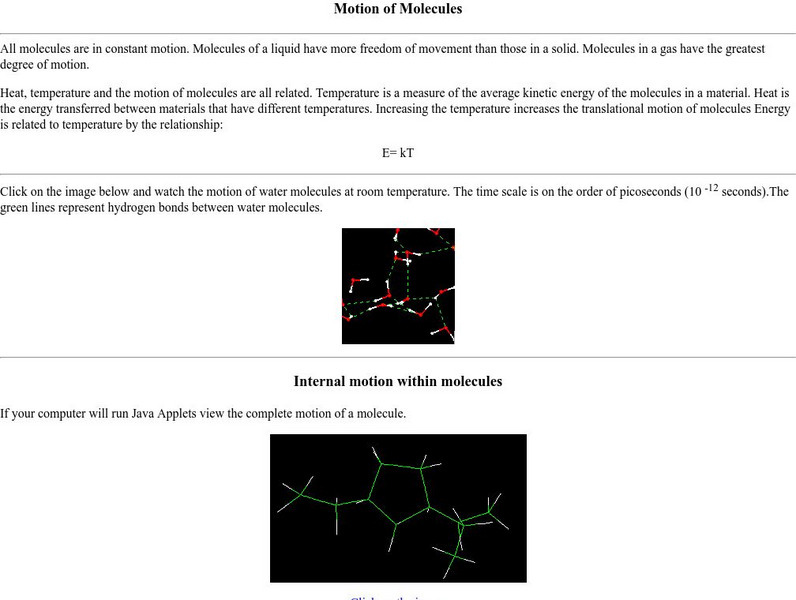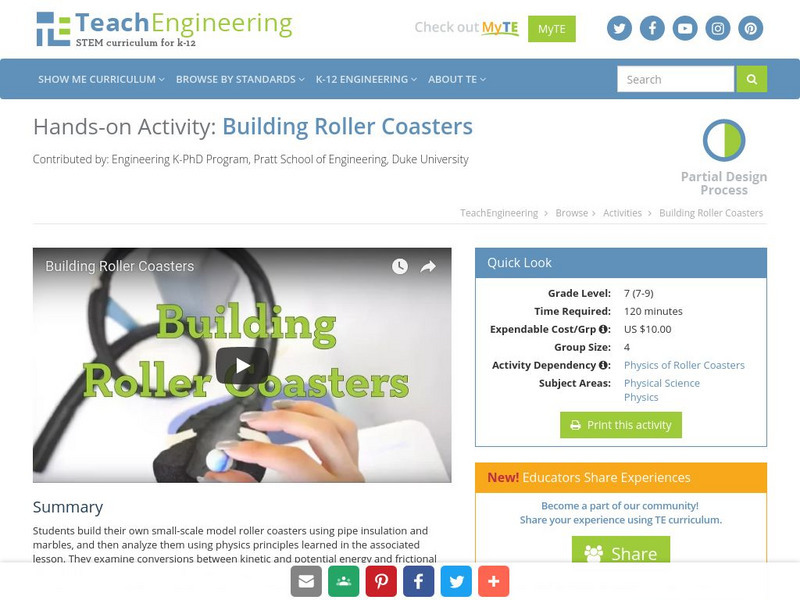Hi, what do you want to do?
CK-12 Foundation
Ck 12: Physical Science: Electric Current
[Free Registration/Login may be required to access all resource tools.] Explains what electric current and voltage are and why electric current occurs.
Cosmo Learning
Cosmo Learning: Engineering Mechanics
A collection of video lectures from a course introducing students to engineering mechanics. Webpage includes forty lectures from a professor at the National Programme on Technology Enhanced Learning. Lectures vary in length and cover...
TeachEngineering
Teach Engineering: Work and Power: Waterwheel
Investigating a waterwheel illustrates to students the physical properties of energy. They learn that the concept of work, force acting over a distance, differs from power, which is defined as force acting over a distance over some...
Annenberg Foundation
Annenberg Learner: Design a Roller Coaster
An interactive lesson where students design and build their own virtual roller coaster. Choose the height of the hills. the shape of the hills. and loop to find out if you successfully used physics concepts to pass the safety and fun...
Other
Funderstanding: Roller Coaster Game
Design your own thrilling coaster and learn about energy and friction.
American Association of Physics Teachers
Com Padre Digital Library: Open Source Physics: Particle Exploding Program
Take a look at general relativity with this science simulation illustrating orbits of objects that are the result of an explosion near a black hole measured in Schwarzschild metric. Users are able to adjust the energy from the exploding...
Boston University
Boston University: Electric Energy and Potential
Scroll down about 1/2 the page to read about what electric potential is. The equation for its computation is given along with its relation to electric potential energy.
Georgia State University
Georgia State University: Hyper Physics: Voltage
Electrical currents and voltage are defined and illustrated.
Other
Princeton Plasma Physics Laboratory: Fusion Basics
A wealth of background information on nuclear fusion and its potential use as a commercial energy resource. The advantages of nuclear fusion over other resources, the conditions required for its successful implementation and the future...
Physics Classroom
The Physics Classroom: Requirements of a Circuit
What four arrangements would result in the successful lighting of a lightbulb? And more importantly, what does each of the four arrangements have in common that would lead to an understanding of the two requirements of an electric...
Khan Academy
Khan Academy: Capacitors Article
This article from Khan Academy provides information about capacitors. This information is intended for the Class 12 Physics Course (India).
Other
My Physics Lab: Roller Coaster
Create a simplified roller coaster with this simulation by creating a track shape for a ball to travel on. Students can change gravity and damping. Site includes equations to help students understand what is happening in the simulation.
Science and Mathematics Initiative for Learning Enhancement (SMILE)
Smile: Potential Energy: How Is It Related to Kinetic Energy
After creating three different ramps with various heights, young scholars will release toy cars from the tops of each ramp. Based on the elementary age level, students will collect data and analyze it.
Physics Classroom
The Physics Classroom: Static Electricity Review
This review from the Glenbrook South High School provides a series of questions on various topics associated with static electricity (such as electrical insulation). Answers and explanations are hidden, yet easily accessed from within a...
Curated OER
Georgia State University: Gravitational Potential Energy
This site from Georgia State University Physics Department defines and explains the concept of gravitational potential energy. Uses many equations and graphics to illustrate the idea. Provides an online computational practice set with...
Curated OER
Georgia State University: Gravitational Potential Energy
This site from Georgia State University Physics Department defines and explains the concept of gravitational potential energy. Uses many equations and graphics to illustrate the idea. Provides an online computational practice set with...
NC State University
The Engineering Place: Roller Coasters [Pdf]
A instructional activity where students construct a roller coaster and test it under different conditions to learn about force and motion.
New York University
Nyu: Math Mol: Motion of Molecules
Examine the link between molecular motion and energy. Observe the movement of a molecule at room temperature. Learn about the different types of molecular motion.
Physics Classroom
The Physics Classroom: Work, Energy, and Power: Internal vs. External Forces
Through illustrated examples and interactive examples, students learn about the two categories of forces are referred to as internal forces and external forces.
TeachEngineering
Teach Engineering: Building Roller Coasters
In this hands-on activity students learn about the laws of physics by creating a marble roller coaster.
Environmental Chemistry
Environmental chemistry.com: Periodic Table Potassium
As the name of this site implies, this is a huge reference site for elemental information. Whether you are looking for properties or isotopes, this site probably has what you need. Images of structure and electron energy level can be...
Environmental Chemistry
Environmental chemistry.com: Tin
As the name of this site implies, this is a huge reference site for elemental information. Whether you are looking for properties or isotopes, this site probably has what you need. Images of structure and electron energy level can be...
Encyclopedia of Earth
Encyclopedia of Earth: Thorium
Information about the element, Thorium, atomic number 90. Covers physical properties, atomic properties, how abundant it is on the Earth, where it is found, and details about health-related regulations. Discusses thorium's potential use...
CK-12 Foundation
Ck 12: Voltage
[Free Registration/Login may be required to access all resource tools.] This lesson looks at what voltage is and how to solve problems involving voltage. Includes a simulation for exploring how charges work in an electric field.










